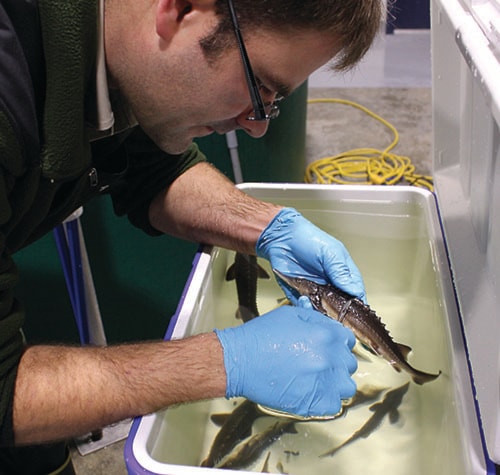Fish at the Nechako White Sturgeon Conservation Centre (NWSCC) are being scaled back, literally.
Part of the tagging process it to have biologists remove the fish’s second and seventh scutes (bony plates on the outside of the fish) on the left side. This will identify the fish was made in 2014 at the Vanderhoof hatchery. First the fish soak in an anaesthetic bath. Some appear to be dead but they are actually just relaxed, Mike Manky said, senior fish culturalist.
“It doesn’t hurt them,” Mr. Manky said. “It’s just in the skin so they don’t feel a thing. Within two days it heals nicely and it’s actually hard to see the marks.”
After removing their scutes, the fish are measured for weight and length. A PIT tag is then injected into the fish so they can be tracked if caught at a later date.
Lastly, a blood sample is taken for Ploidy analysis. This shows how many chromosomes the fish have to make sure they’re not sterile and won’t produce sterile offspring.
“We had some difficulties with water temperature fluctuation in the beginning but, our fish are much healthier now and they wouldn’t have been so big if all the fish had lived. We have more space in the tanks to grow them now and they will be much larger than anticipated for the release in the spring,” Mr. Manky said.
About 1,250 fish made it to the tagging/scaling stage, 1,205 of which were tagged over a three-day process. The remaining fish aren’t quite big enough yet, Mr. Manky said, who explained they tag the fish now because it’s much easier to handle them when their not so big with no real benefit to the fish to do it later.
